A Laborer’s Mask-Wearing Behavior Detection Approach in the Manufacturing Field
Abstract
:1. Introduction
1.1. Effect of Workplace Safety in the Labor Marketplace
1.2. Anomaly Detection of Epidemic Prevention
1.3. Applications of the Internet of Things in the Manufacturing Field
- To determine the anomaly events using You Only Look Once (YOLO) and the reinforcement training mechanism to enhance detection accuracy.
- To provide a CAADS to aid anomaly detection.
- To enable an intuitive and economical approach by integrating DA and the system.
2. Related Work
3. Materials and Methods
3.1. Use Case and Data Collection
3.2. Original Data Preprocessing
3.2.1. Resizing
3.2.2. Image Filtering
3.2.3. Image Segmentation
3.2.4. Labeling
3.2.5. Data Transfer
3.3. Training Model for Anomaly Detection
3.3.1. Preliminary Model—YOLO Model
3.3.2. The Reinforcement Training Mechanism
3.4. Model Evaluation
3.4.1. Accuracy
3.4.2. Recall Rate (Sensitivity)
3.4.3. Precision Rate
3.4.4. F1-Score
3.4.5. Matthews Correlation Coefficient
3.5. Model Deployment
4. System Design
4.1. Data Acquisition Module
4.2. Supervisory Control Module (MQTT)
4.3. Visualization Module
4.4. The Utilization of API
QGoogle × RGoogle + QSendgrid × RSendgrid = TQSpecified
Subject to:
QGoogle × RGoogle ≤ TQSpecified
QSendgrid × RSendgrid ≤ TQSpecified
RGoogle ≤ LimitRGoogle
RSendgrid ≤ LimitRSendgrid
5. Result
5.1. The Results of Data Analytics
5.1.1. The Output of Pre—Preprocessing
5.1.2. The Results of the Trained Model
5.2. The Implementation of the CAADS
5.2.1. Validation of Data Transmission-Data Consistency
5.2.2. Validation of the Real-Time SCADA Dashboard
5.2.3. Validation of Data Correctness—The Alarm Notification
5.2.4. Validation of Data Correctness—The Form Generator
6. Conclusions
Funding
Institutional Review Board Statement
Informed Consent Statement
Conflicts of Interest
References
- World Health Organization. A Clinical Case Definition of Post COVID-19 Condition by a Delphi Consensus, 6 October 2021. 2021. Available online: https://www.who.int/publications/i/item/WHO-2019-nCoV-Post_COVID-19_condition-Clinical_case_definition-2021.1 (accessed on 13 March 2022).
- Ceban, F.; Ling, S.; Lui, L.M.; Lee, Y.; Gill, H.; Teopiz, K.M.; Rodrigues, N.; Subramaniapillai, M.; Di Vincenzo, J.; Cao, B.; et al. Fatigue and Cognitive Impairment in Post-COVID-19 Syndrome: A Systematic Review and Meta-Analysis. Brain Behav. Immun. 2022, 101, 93–135. [Google Scholar] [CrossRef]
- Bach, K. Is “Long COVID” Worsening the Labor Shortage? Report, the Brookings Institution: Washington, DC, USA, 2022. [Google Scholar]
- International Labour Organization. ILO Monitor: COVID-19 and the World of Work. Updated Estimates and Analysis, 7th ed.; International Labour Organization: Geneva, Switzerland, 2020. [Google Scholar]
- International Labour Organization. ILO Monitor: COVID-19 and the World of Work. Updated Estimates and Analysis, 8th ed.; International Labour Organization: Geneva, Switzerland, 2021. [Google Scholar]
- Zandt, F. Omicron Winter Causing Record Workforce Shortage; Statista: Hamburg, Germany, 2022. [Google Scholar]
- Windsor-Shellard, B.; Rabiya, N. Coronavirus (COVID-19) Related Deaths by Occupation, England and Wales: Deaths Registered up to and Including 20 April 2020. Statistical Bulletin. London: Office for National Statistics. Available online: http://www.cgas.ch/SPIP/IMG/pdf/coronavirus_covid-19_related_deaths_by_occupation_england_and_wales_deaths_registered_up_to_and_including_20_april_2020.pdf (accessed on 17 March 2022).
- Burdorf, A.; Porru, F.; Rugulies, R. The COVID-19 pandemic: One year later–an occupational perspective. Scand. J. Work. Environ. Health 2021, 47, 245–247. [Google Scholar] [CrossRef] [PubMed]
- Michaels, D.; Wagner, G.R. Occupational Safety and Health Administration (OSHA) and worker safety during the COVID-19 pandemic. JAMA 2020, 324, 1389–1390. [Google Scholar] [CrossRef]
- Gould, E.L.; Rawlston-Wilson, V. Black Workers Face Two of the Most Lethal Preexisting Conditions for Coronavirus—Racism and Economic Inequality: Report; Economic Policy Institute: Washington, DC, USA, 2020. [Google Scholar]
- Chen, Y.H.; Glymour, M.; Riley, A.; Balmes, J.; Duchowny, K.; Harrison, R.; Matthay, E.; Bibbins-Domingo, K. Excess mortality associated with the COVID-19 pandemic among Californians 18–65 years of age, by occupational sector and occupation: March through November 2020. PLoS ONE 2021, 16, e0252454. [Google Scholar] [CrossRef] [PubMed]
- Pittino, F.; Puggl, M.; Moldaschl, T.; Hirschl, C. Automatic anomaly detection on in-production manufacturing machines using statistical learning methods. Sensors 2020, 20, 2344. [Google Scholar] [CrossRef] [PubMed] [Green Version]
- Shi, Y.; Wang, D.; Chen, Y.; Chen, B.; Zhao, B.; Deng, M. An anomaly detection approach from spatio distributions of epidemic based on adjacency constraints in flow space. Cehui Xuebao/Acta Geod. Cartogr. Sin. 2021, 50, 777–788. [Google Scholar]
- Samani, H.; Yang, C.Y.; Li, C.; Chung, C.L.; Li, S. Anomaly Detection with Vision-Based Deep Learning for Epidemic Prevention and Control. J. Comput. Des. Eng. 2022, 9, 187–200. [Google Scholar] [CrossRef]
- Ukil, A.; Bandyoapdhyay, S.; Puri, C.; Pal, A. IoT healthcare analytics: The importance of anomaly detection. In Proceedings of the 2016 IEEE 30th International Conference on Advanced Information Networking and Applications (AINA), Crans-Montana, Switzerland, 23–25 March 2016; IEEE: Piscataway Township, NJ, USA; pp. 994–997. [Google Scholar]
- Sunny, J.S.; Patro, C.P.K.; Karnani, K.; Pingle, S.C.; Lin, F.; Anekoji, M.; Jones, L.; Kesari, S.; Ashili, S. Anomaly Detection Framework for Wearables Data: A Perspective Review on Data Concepts, Data Analysis Algorithms and Prospects. Sensors 2022, 22, 756. [Google Scholar] [CrossRef]
- Salih, K.O.M.; Rashid, T.A.; Radovanovic, D.; Bacanin, N. A Comprehensive Survey on the Internet of Things with the Industrial Marketplace. Sensors 2022, 22, 730. [Google Scholar] [CrossRef]
- Cheng, J.; Chen, W.; Tao, F.; Lin, C.L. Industrial IoT in 5G environment towards smart manufacturing. J. Ind. Inf. Integr. 2018, 10, 10–19. [Google Scholar] [CrossRef]
- Wuest, T.; Kusiak, A.; Dai, T.; Tayur, S.R. Impact of COVID-19 on Manufacturing and Supply Networks—The Case for AI-inspired Digital Transformation. 2020. Available online: https://papers.ssrn.com/sol3/papers.cfm?abstract_id=3593540 (accessed on 15 April 2022).
- Alhayani, B.; Abdallah, A.A. Manufacturing intelligent Corvus corone module for a secured two way image transmission under WSN. Eng. Comput. 2020, 38, 1751–1788. [Google Scholar] [CrossRef]
- Alhayani, B.S. Visual sensor intelligent module based image transmission in industrial manufacturing for monitoring and manipulation problems. J. Intell. Manuf. 2021, 32, 597–610. [Google Scholar] [CrossRef]
- Du Plessis, A.; Yadroitsev, I.; Yadroitsava, I.; Le Roux, S.G. X-ray microcomputed tomography in additive manufacturing: A review of the current technology and applications. 3D Print. Addit. Manuf. 2018, 5, 227–247. [Google Scholar] [CrossRef] [Green Version]
- Wang, J.; Ma, Y.; Zhang, L.; Gao, R.X.; Wu, D. Deep learning for smart manufacturing: Methods and applications. J. Manuf. Syst. 2018, 48, 144–156. [Google Scholar] [CrossRef]
- Li, C.; Hu, M.; Li, Y.; Jiang, H.; Ge, N.; Montgomery, E.; Zhang, J.; Song, W.; Dávila, N.; Graves, C.E.; et al. Analogue signal and image processing with large memristor crossbars. Nat. Electron. 2018, 1, 52–59. [Google Scholar] [CrossRef]
- Lee, J.; Davari, H.; Singh, J.; Pandhare, V. Industrial Artificial Intelligence for industry 4.0-based manufacturing systems. Manuf. Lett. 2018, 18, 20–23. [Google Scholar] [CrossRef]
- Nixon, M.; Aguado, A. Feature Extraction and Image Processing for Computer Vision; Academic Press: Cambridge, MA, USA, 2019. [Google Scholar]
- Qi, X.; Chen, G.; Li, Y.; Cheng, X.; Li, C. Applying neural-network-based machine learning to additive manufacturing: Current applications, challenges, and future perspectives. Engineering 2019, 5, 721–729. [Google Scholar] [CrossRef]
- Lee, J.; Azamfar, M.; Singh, J.; Siahpour, S. Integration of digital twin and deep learning in cyber-physical systems: Towards smart manufacturing. IET Collab. Intell. Manuf. 2020, 2, 34–36. [Google Scholar] [CrossRef]
- Deecke, L.; Vandermeulen, R.; Ruff, L.; Mandt, S.; Kloft, M. Image anomaly detection with generative adversarial networks. In Proceedings of the Joint European Conference on Machine Learning and Knowledge Discovery in Databases, Dublin, Ireland, 10–14 September 2018; Springer: Cham, Switzerland; pp. 3–17. [Google Scholar]
- Berg, A.; Ahlberg, J.; Felsberg, M. Unsupervised learning of anomaly detection from contaminated image data using simultaneous encoder training. arXiv 2019, arXiv:1905.11034. [Google Scholar]
- Wang, C.; Tan, X.P.; Tor, S.B.; Lim, C.S. Machine learning in additive manufacturing: State-of-the-art and perspectives. Addit. Manuf. 2020, 36, 101538. [Google Scholar] [CrossRef]
- Zhang, Y.; Hong, G.S.; Ye, D.; Zhu, K.; Fuh, J.Y. Extraction and evaluation of melt pool, plume and spatter information for powder-bed fusion AM process monitoring. Mater. Des. 2018, 156, 458–469. [Google Scholar] [CrossRef]
- Caggiano, A.; Zhang, J.; Alfieri, V.; Caiazzo, F.; Gao, R.; Teti, R. Machine learning-based image processing for on-line defect recognition in additive manufacturing. CIRP Ann. 2019, 68, 451–454. [Google Scholar] [CrossRef]
- Hou, Y.; Li, Q.; Zhang, C.; Lu, G.; Ye, Z.; Chen, Y.; Wang, L.; Cao, D. The state-of-the-art review on applications of intrusive sensing, image processing techniques, and machine learning methods in pavement monitoring and analysis. Engineering 2021, 7, 845–856. [Google Scholar] [CrossRef]
- Wang, L.; Zhang, D.; Guo, J.; Han, Y. Image anomaly detection using normal data only by latent space resampling. Appl. Sci. 2020, 10, 8660. [Google Scholar] [CrossRef]
- Petrou, M.M.; Kamata, S.I. Image Processing: Dealing with Texture; John Wiley & Sons: Hoboken, NJ, USA, 2021. [Google Scholar]
- Benabdellah, A.C.; Benghabrit, A.; Bouhaddou, I.; Zekhnini, K. Knowledge Discovery for Sustainability Enhancement Through Design for Relevance. In Networking, Intelligent Systems and Security; Springer: Singapore, 2022; pp. 705–722. [Google Scholar]
- Chauhan, R.; Kaur, H. Knowledge Framework for Deep Learning: Congenital Heart Disease. In Deep Learning in Data Analytics; Springer: Cham, Switzerland, 2022; pp. 61–74. [Google Scholar]
- Redmon, J.; Divvala, S.; Girshick, R.; Farhadi, A. You only look once: Unified, real-time object detection. In Proceedings of the IEEE Conference on Computer Vision and Pattern Recognition, Las Vegas, NV, USA, 27–30 June 2016; pp. 779–788. [Google Scholar]
- Chang, C.; Siagian, C.; Itti, L. Mobile robot vision navigation & localization using Gist and Saliency. In Proceedings of the 2010 IEEE/RSJ International Conference on Intelligent Robots and Systems, Taipei, Taiwan, 18–22 October 2010; pp. 4147–4154. [Google Scholar]
- He, W.; Huang, Z.; Wei, Z.; Li, C.; Guo, B. TF-YOLO: An improved incremental network for real-time object detection. Appl. Sci. 2019, 9, 3225. [Google Scholar] [CrossRef] [Green Version]
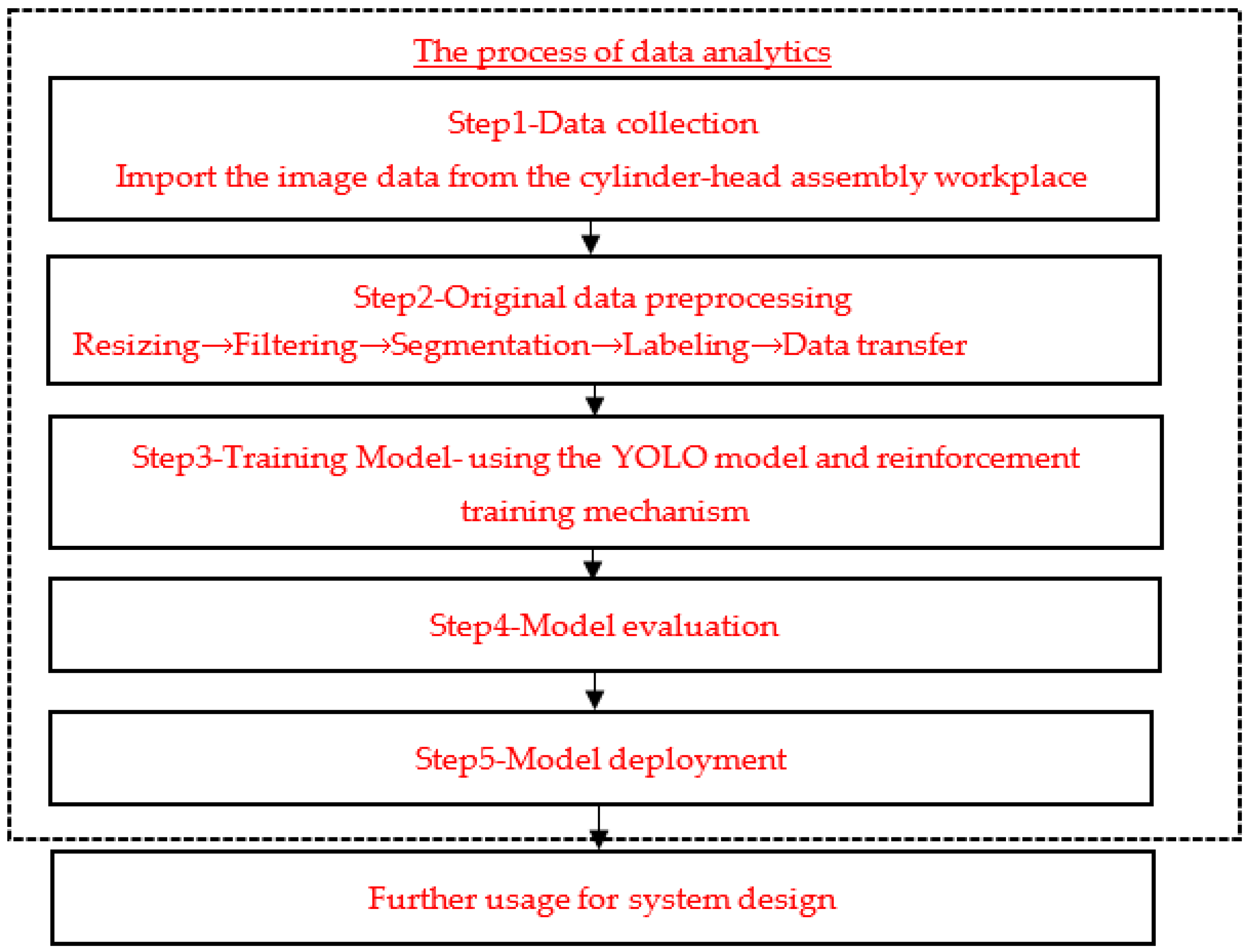


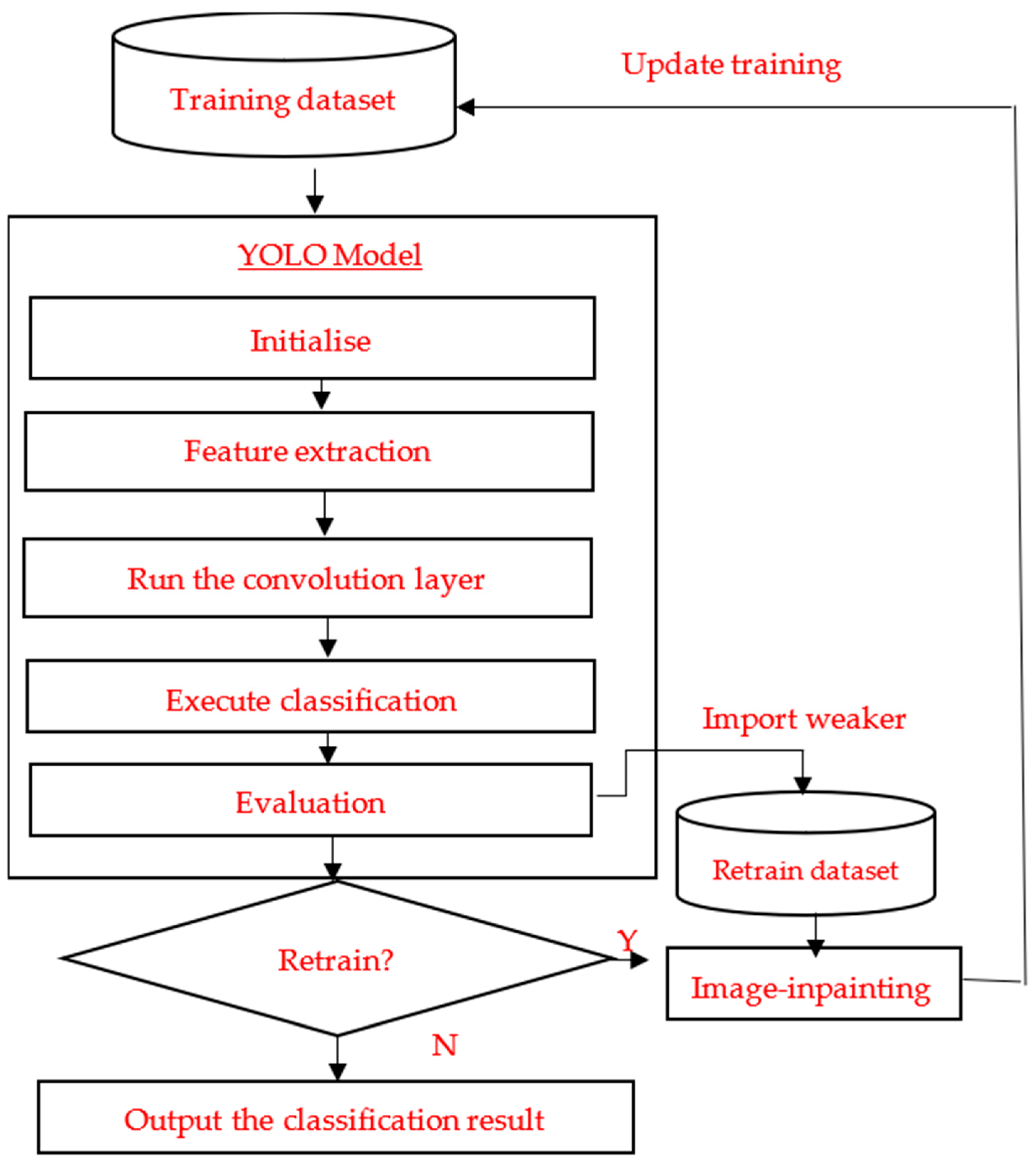
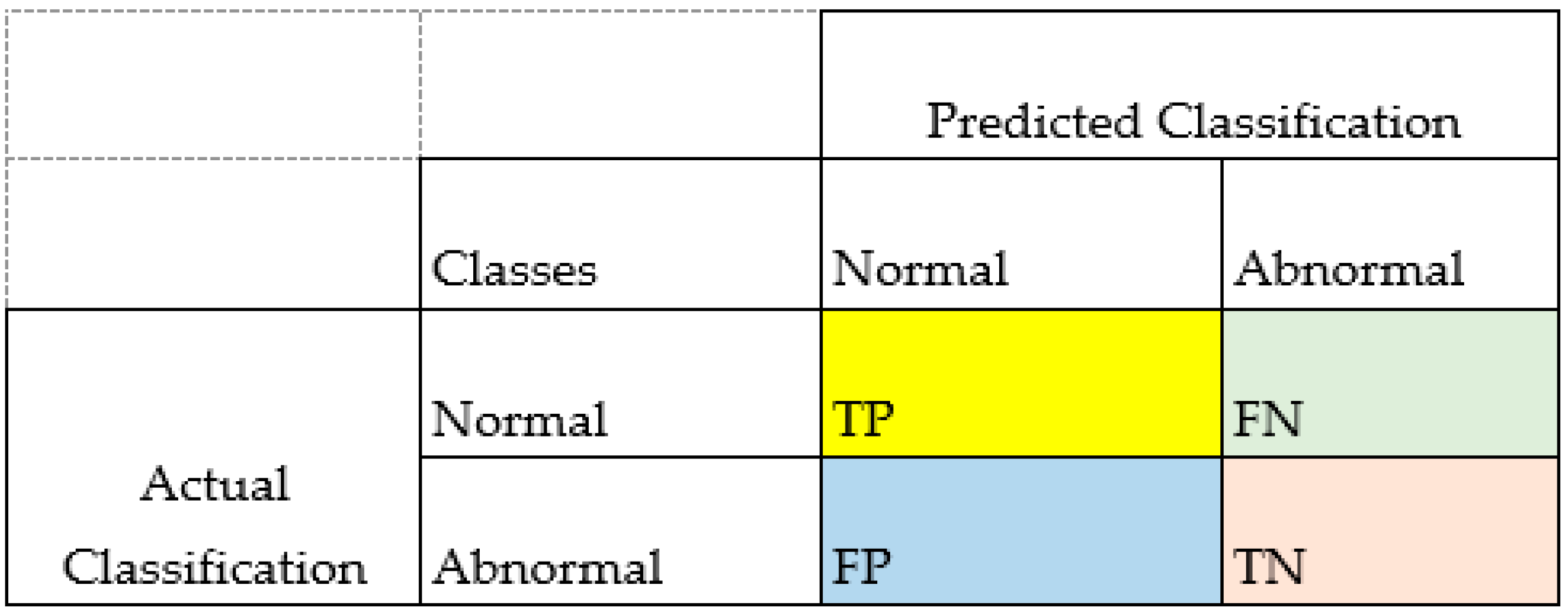
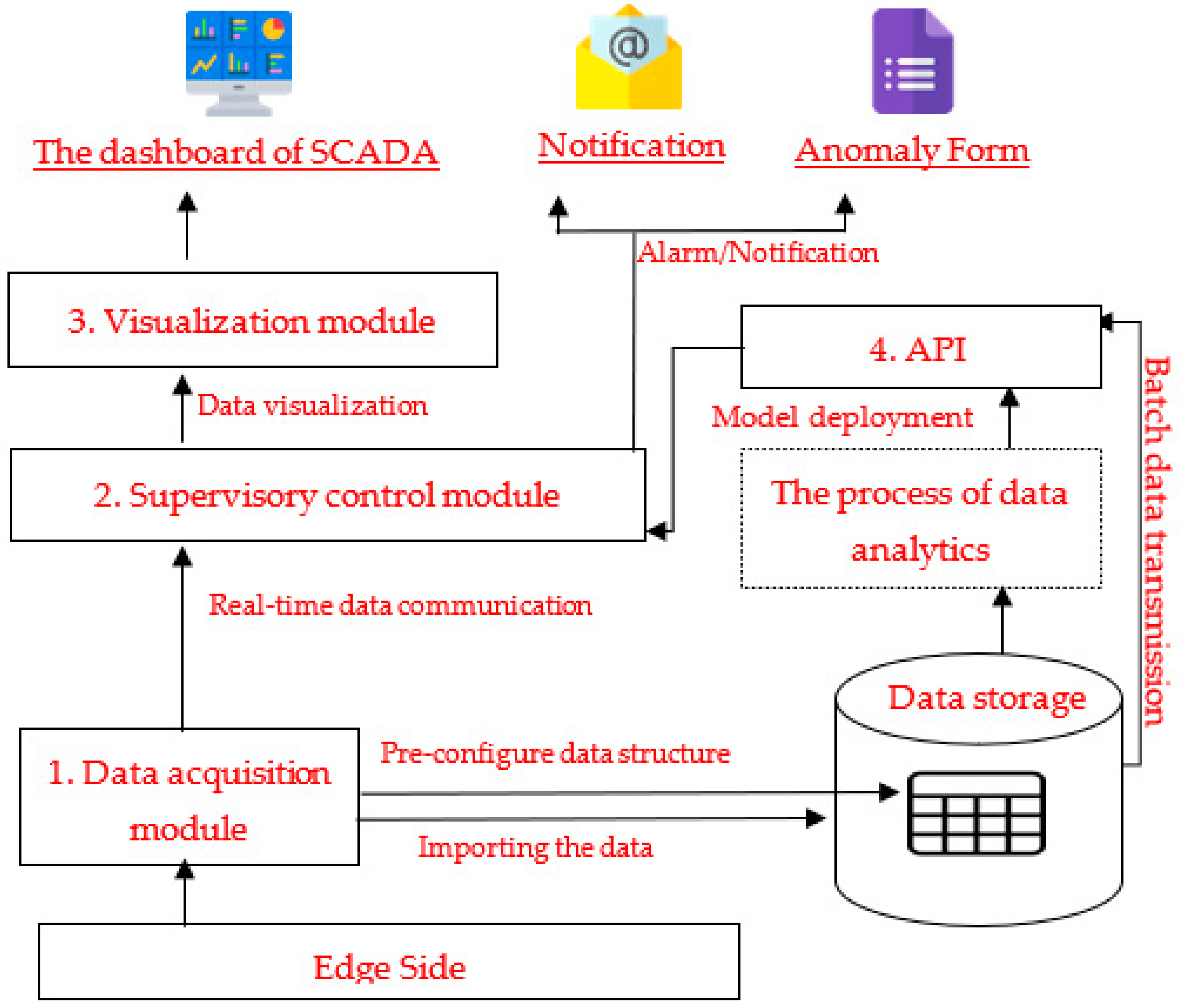


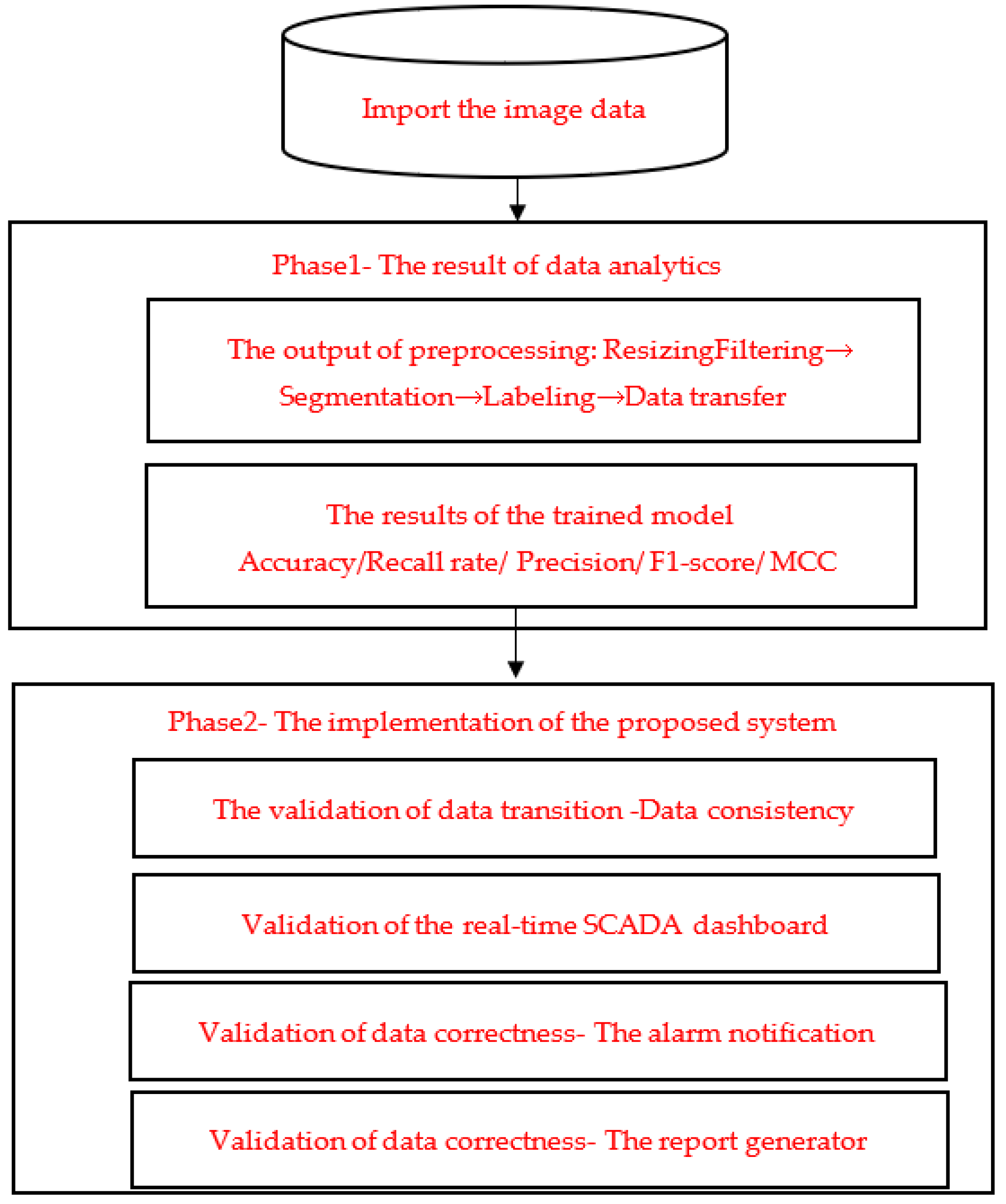
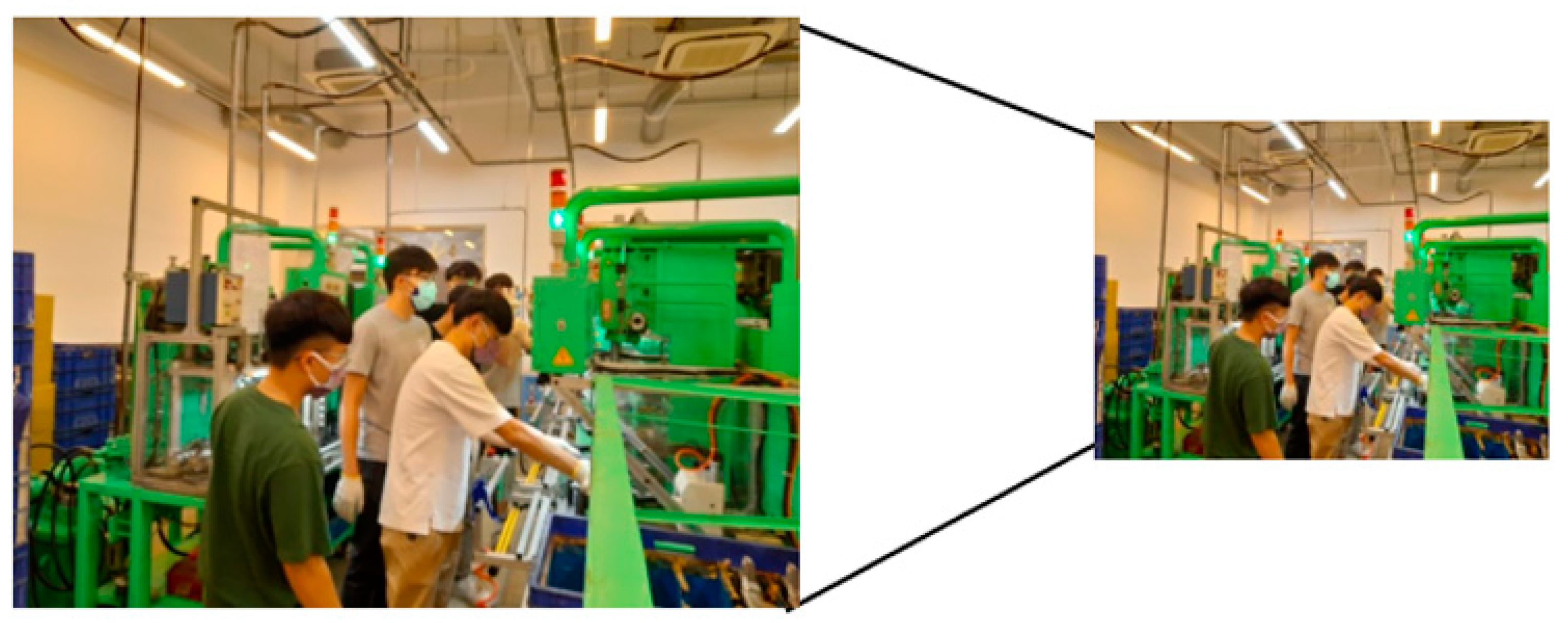

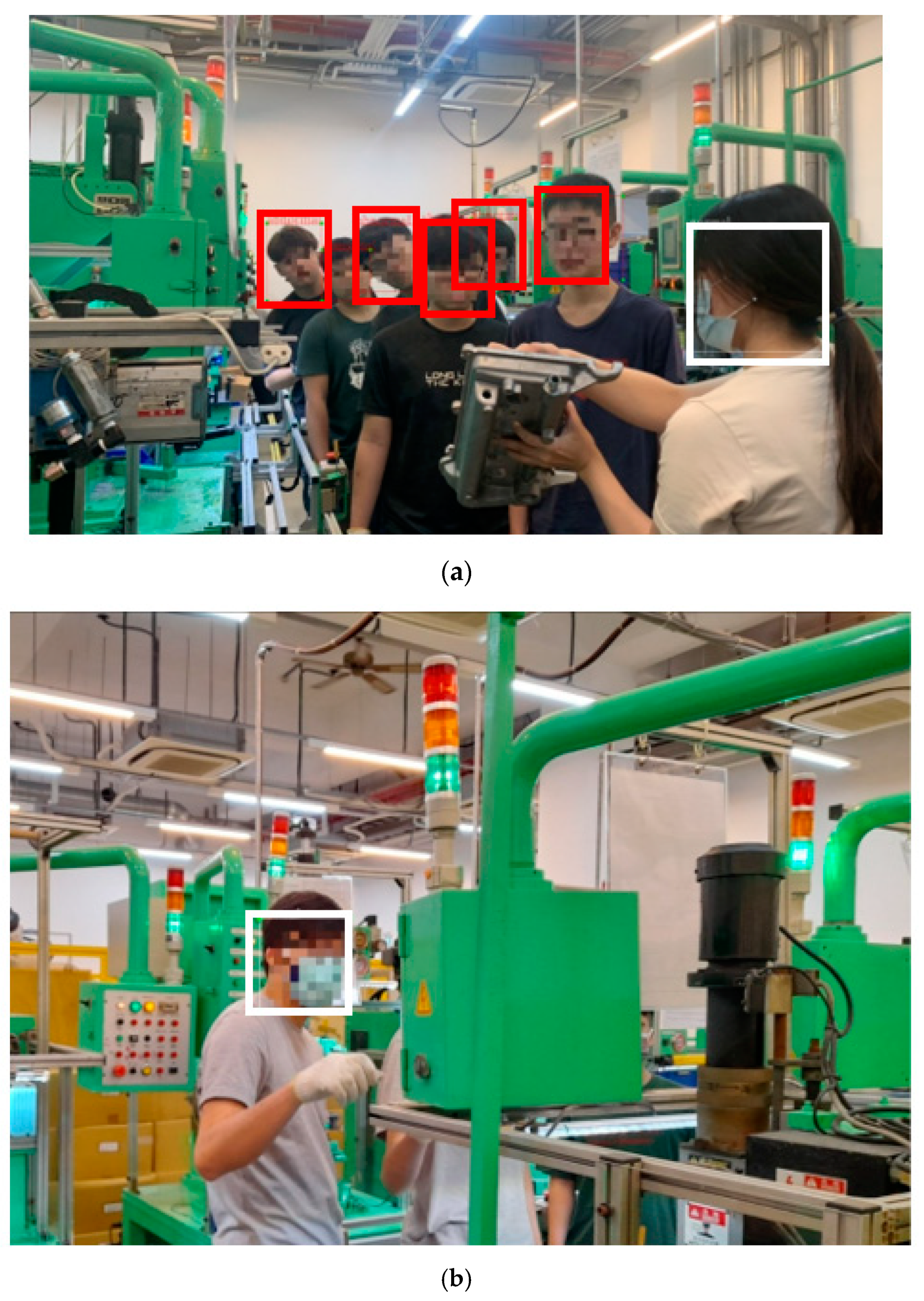
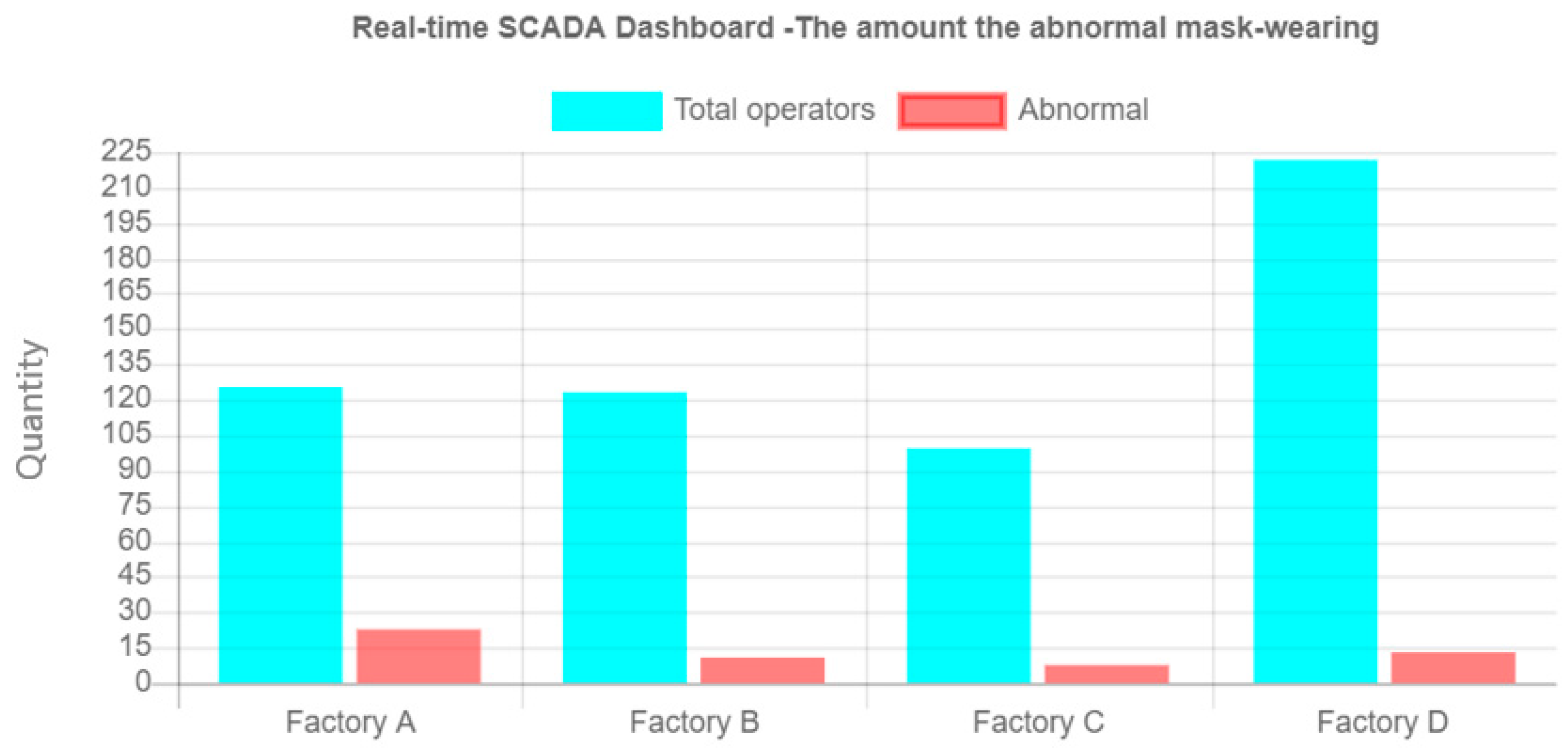
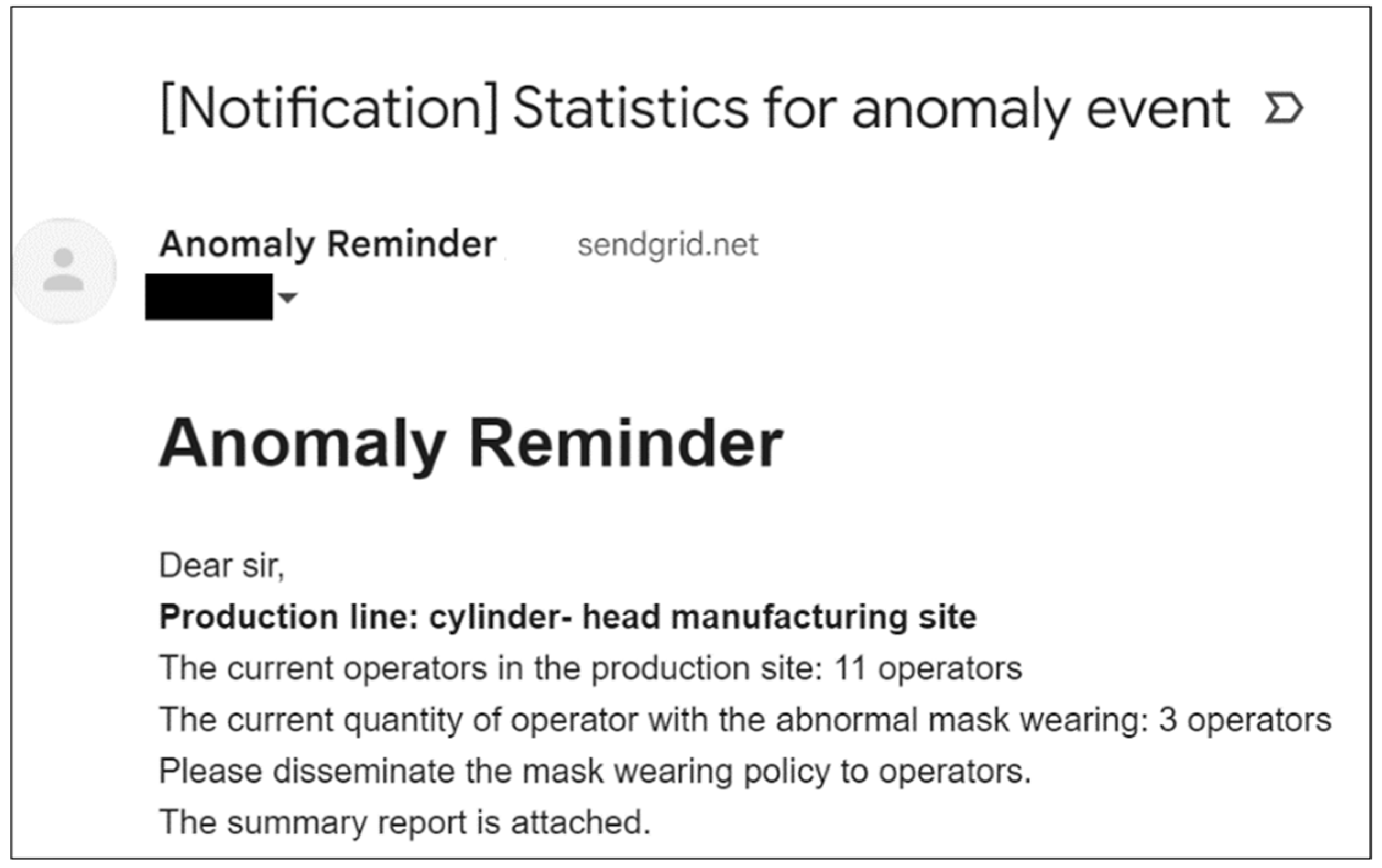

| Type | Method | Studies |
|---|---|---|
| Hardware | Image transmission | [20,21] |
| X-ray microcomputed tomography | [22] | |
| Software application | Feature extraction | [26,36] |
| Deep learning | [25,27,29,30,31,32,33,34] | |
| Artificial intelligence | [25,27,28,31] | |
| Image statistics | [35,36] | |
| Image compression and convolutional filtering | [24] |
| Main Part | Specification |
|---|---|
| Central Processing Unit | AMD (8-Core) 4.7 G |
| Main Board | Asus TUF X570-PLUS(ATX) |
| Random Access Memory | Kingston 128 GB |
| Hard disk | WD SN750SE 500 G/Gen4 |
| Graphics Processing Unit | NVIDIA RTX3080-10 G |
| Power supply unit | Asus ROG STRIX 1000 W |
| Approach | YOLO | YOLO + The Proposed Reinforcement Training | Average |
|---|---|---|---|
| Accuracy | 0.87 | 0.90 | 0.89 |
| Precision | 0.85 | 0.90 | 0.87 |
| Recall rate | 0.92 | 0.93 | 0.92 |
| F1-Score | 0.88 | 0.91 | 0.90 |
| MCC | 0.74 | 0.80 | 0.77 |
Disclaimer/Publisher’s Note: The statements, opinions and data contained in all publications are solely those of the individual author(s) and contributor(s) and not of MDPI and/or the editor(s). MDPI and/or the editor(s) disclaim responsibility for any injury to people or property resulting from any ideas, methods, instructions or products referred to in the content. |
© 2023 by the author. Licensee MDPI, Basel, Switzerland. This article is an open access article distributed under the terms and conditions of the Creative Commons Attribution (CC BY) license (https://creativecommons.org/licenses/by/4.0/).
Share and Cite
Hung, Y.-H. A Laborer’s Mask-Wearing Behavior Detection Approach in the Manufacturing Field. Processes 2023, 11, 1086. https://doi.org/10.3390/pr11041086
Hung Y-H. A Laborer’s Mask-Wearing Behavior Detection Approach in the Manufacturing Field. Processes. 2023; 11(4):1086. https://doi.org/10.3390/pr11041086
Chicago/Turabian StyleHung, Yu-Hsin. 2023. "A Laborer’s Mask-Wearing Behavior Detection Approach in the Manufacturing Field" Processes 11, no. 4: 1086. https://doi.org/10.3390/pr11041086
APA StyleHung, Y.-H. (2023). A Laborer’s Mask-Wearing Behavior Detection Approach in the Manufacturing Field. Processes, 11(4), 1086. https://doi.org/10.3390/pr11041086









